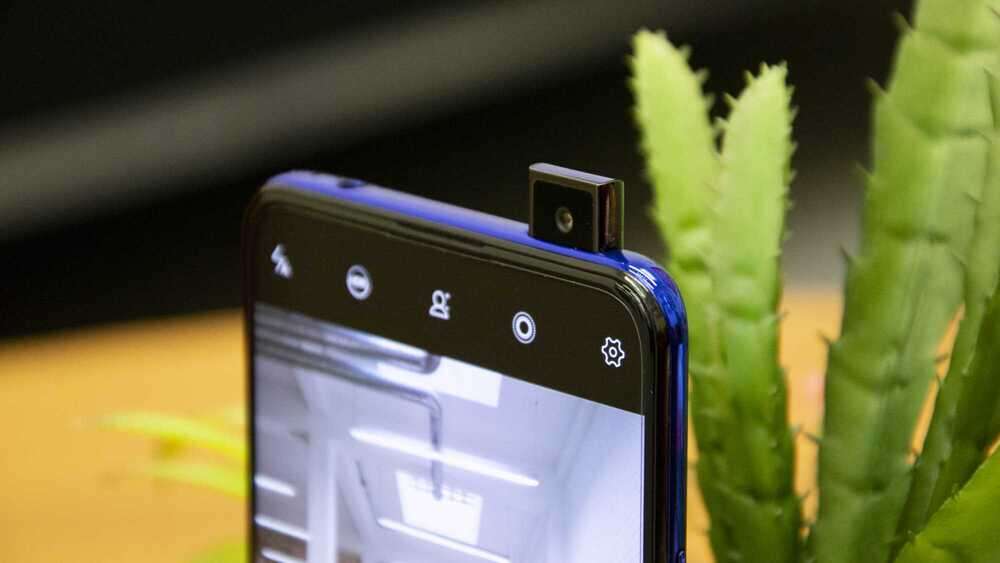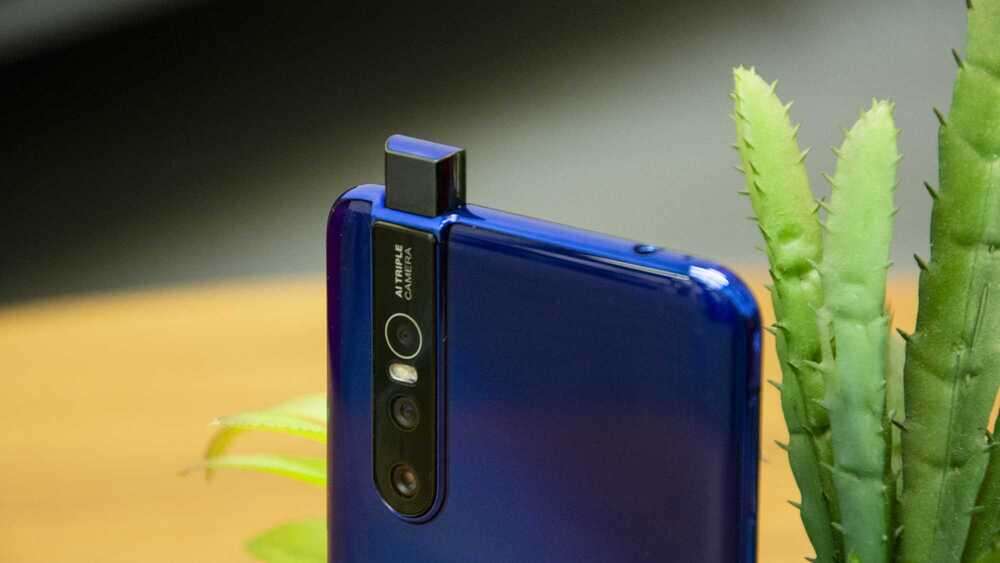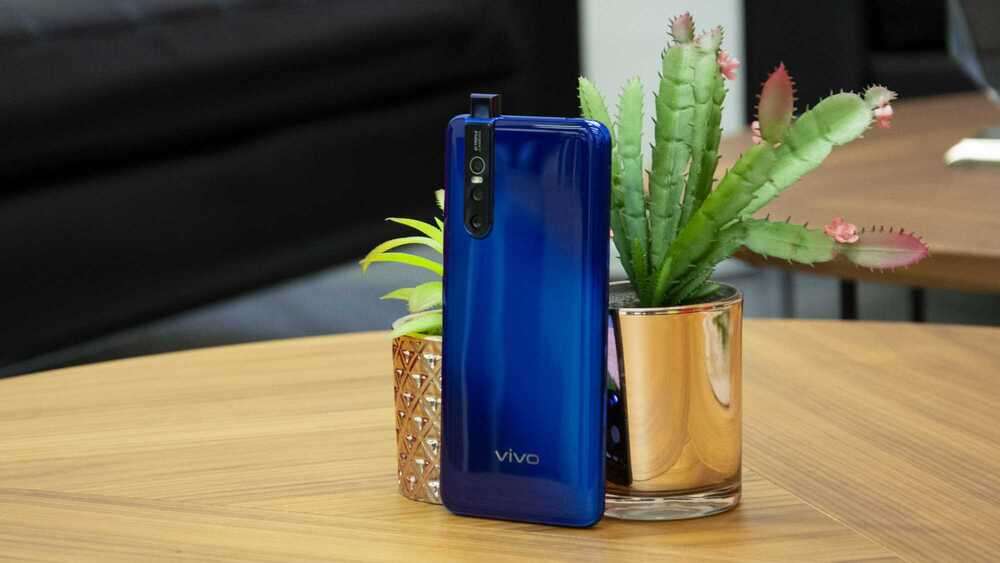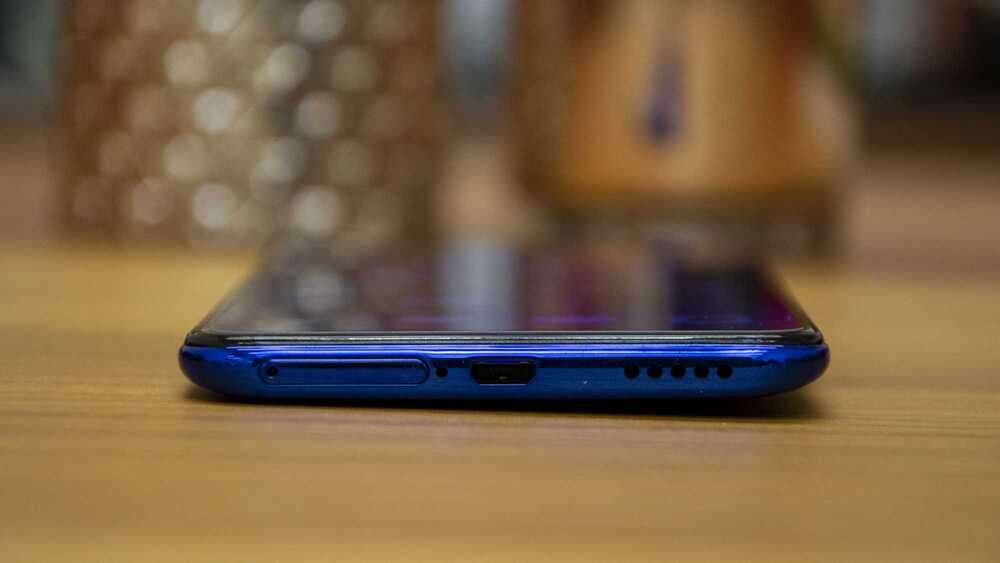Vivo V15 Pro review: Innovative but far from great
The Vivo V15 Pro stems from one of 2018’s most innovative smartphones. The Vivo Nex S was innovative because it took a different approach, employing a motorised, pop-up module to house the selfie camera instead of a screen-eating notch.
The V15 Pro follows a similar template, enabling the screen to fill almost the entire front of the phone, uninterrupted by cutouts, notches or holes. The question is: can it sway the average punter?
READ NEXT: Best smartphones – our pick of the best
Vivo V15 Pro review: What you need to know
Aside from the motorised popup camera, the Android-powered Vivo V15 Pro is stuffed full of the latest smartphone features. That selfie camera, for instance, is not only motorised but also has an incredible resolution of 32 megapixels. There’s an in-display fingerprint sensor here, too.
But that’s not all. You’re also getting Qualcomm’s latest mid-tier processor, the Snapdragon 675, a triple-camera arrangement with a 48-megapixel primary shooter and a stunning design and a large (notch-free thanks to that pop-up camera) 6.39in Super AMOLED display.

READ NEXT: Nokia 7 Plus review: A very likeable big-screen phone at a tempting price
Vivo V15 Pro review: Price and competition
Vivo phones have, so far, been notoriously hard to source in Europe and, while the manufacturer has expanded its reach, the V15 Pro is still tricky to get hold of. In the UK, you’ll have to resort to using eBay, where one will cost you around £430 SIM-free .
Vivo’s 2018 flagship, the Nex S, is also pretty hard to get hold of. It costs around £459 and also has a pop-up selfie camera and an in-display fingerprint sensor. However, it houses the faster Snapdragon 845 processor.
If you want an easier life, there are a few phones from rival brands to consider, all of which are more readily available in the UK. Honor’s View 20 costs £500 and houses the blistering Kirin 980 processor, the same 48-megapixel camera and a hole-punch selfie snapper at the front.
If you want to save more money, I’d suggest considering the Xiaomi Pocophone F1, which costs just £285 , or the stupendously good Xiaomi Mi 9 , which costs around the same but features the very latest Qualcomm chipset – the superfast Snapdragon 855 .
READ NEXT: Vivo Nex S review: The edge-to-edge phone with no notch
Vivo V15 Pro review: Design and build quality
Considering the price, Vivo certainly hasn’t held back on design, and the motorised pop-up camera takes centre stage here. Positioned at the top-right-hand edge, it removes the need for a notch or an in-display camera by stowing itself away from sight within the body of the device and springing into action when you open an app that requires the front-facing camera. It also pops out when you press the power button if you’ve enabled face unlock.

Interestingly, the pop-up module houses not only the selfie camera but also the triple rear camera array, a design decision that causes a slight bulge on the rear of the phone. That, in turn, means the phone doesn’t lie flat when laid on a desk and rocks with every tap to the right-hand edge of the display.
The phone’s design is otherwise beautiful. The gradient blue finish at the back looks great – diagonal lines sit under the glass panel and refract the light as you tilt the phone back and forth. It’s certainly an eye-catching sight, but not quite as visually appealing as the Honor View 20, which has a dramatic laser-etched “V” on the rear panel that seems to come alive as it moves.

As for features, Vivo thankfully opts to keep the 3.5mm headphone jack in place and includes a dedicated Google Assistant/Search button on the left edge, which can also be disabled.
The choice of a micro-USB port over the newer USB Type-C connector is rather baffling, though, as is the omission of NFC. Without an IP rating, it’s not officially dust- or water-resistant either. I find it rather intriguing to see the phone’s microSD expansion slot sit separately from the dual nano-SIM tray, but that’s better than having not memory expansion at all. Nonetheless, I suspect most will not utilise the slot, as the phone ships with 128GB of internal storage.

READ NEXT: Motorola Moto G7 Plus review: The most luxurious budget smartphone is back
Vivo V15 Pro review: Display
Still, the V15 Pro’s 6.39in Super AMOLED display looks great. It packs a Full HD+ resolution of 1,080 x 2,316 and it’s a visual treat, especially with no notch or in-display selfie camera to get in the way.
It’s plenty bright and easy to read outdoors, too – I measured it reaching a peak of 605cd/m² in bright ambient light and with auto brightness enabled. It’s a great screen for watching movies on, too, with colour coverage that’s pretty close to the DCI-P3 colour gamut used in HDR movies. Alas, it’s not so good for day-to-day tasks such as browsing the web, where images take on a slightly oversaturated look.
READ NEXT: Our pick of the best budget phones you can buy in the UK
Vivo V15 Pro review: Battery life and performance
General performance was good, particularly battery life. In our video-rundown test (with the screen set to a standard 170cd/m² for consistency), the V15 Pro’s 3,700mAh battery lasted 19hrs 39mins. In real-world terms, this means it will, typically, last a full day with medium to heavy use. Charging is reasonably quick, too, reaching 24% in a mere 15 minutes thanks to Vivo’s “Dual-Engine” fast-charging technology.
Its impressive battery life is the result of Qualcomm’s latest 11nm Snapdragon 675 chipset, which is more efficient than last year’s 14nm mid-tier Snapdragon 660. That seems to come at the cost of speed and responsiveness, however, even when coupled with 6GB of RAM as it is here.
It feels nowhere near as snappy as the Kirin 980-equipped Honor View 20, for instance, and it falls a long way short of the Xiaomi Pocophone F1, Vivo Nex S and OnePlus 6T, all of which use the top-tier Snapdragon 845 chip.
It’s a similar story when it comes to intensive gaming. In the offscreen GFXBench Manhattan 3.0 benchmark, the V15 Pro is far below the 59fps mark achieved by the Honor View 20. Real-world gaming won’t feel as smooth, either.
On the software side of things, Vivo’s FunTouch OS 9 runs on top of Android 9 Pie. Suffice to say I’m not a fan as it over-complicates basic interactions. One example is the notifications menu. On most Android phones, a swipe down with your thumb reveals not only your notifications but also a series of quick settings controls for things like flight mode, screen brightness and so on.
Not here; instead, you’ll need to swipe from the bottom of the screen, where you’ll be presented with a panel similar in look and feel to Apple’s Control Centre. Alas, it simply doesn’t work as intuitively on Android.
Also, a cause for concern for those who stream shows and movies: the Vivo V15 Pro ships with Widevine DRM L3 certification, which means you'll be limited to non-HD streams on Netflix and Amazon Prime. By comparison, the Honor View 20 that boasts a near-identical resolution and display size ships with L1 certification, instead. Running the phones side-by-side, I noticed the video quality on the View 20 was sharper.
READ NEXT: Samsung Galaxy S8 review: Still a great handset
Vivo V15 Pro review: Camera
The chipset’s lacklustre performance extends its influence to all reaches of the V15 Pro’s performance, including the camera app, which takes an age to fire up, whether you’re using the front or the rear cameras.
Image quality isn’t that great, either. On paper, the V15 Pro’s triple-camera setup should beat the Honor View 20’s single snapper. But its 48-megapixel f/1.8, 8-megapixel ultra-wide and 5-megapixel f/2.4 depth cameras are outdone by the View 20, despite it using the same model of 48-megapixel primary camera module as the V15 Pro.
The View 20’s camera feels a good deal snappier and overall image quality is superior, too. Comparing photos captured with each phone under the same lighting conditions, the Vivo V15 Pro’s images lack both clarity and colour accuracy; it’s apparent that the processing that takes place after the shot has been captured is what’s at fault. In the image below, the tree branches on the left of the frame and the chimneys along the bottom are smeared and lack any kind of detail. Even the colour temperature is slightly off.
Throw in complex building structures, scaffolding and a multitude of colours into the mix and the V15 Pro’s camera begins to struggle even more, reproducing unnatural, artificial-looking images.
Despite being outgunned by the View 20, however, the output is still far from irredeemable. You’ll be fine as long as you stick with the 12-megapixel mode, which produces decent results unless you crop in severely.
^ Vivo V15 Pro 48-megapixel mode
^ Vivo V15 Pro 12-megapixel mode
Where the V15 Pro moves ahead of the competition is its ultrawide camera, which is fun to work with and can create some great-looking results.
^ Vivo V15 Pro ultrawide
And in low-light conditions, the Vivo V15 Pro fares a little better, suppressing image noise a little better than the View 20. Colour tones are a touch oversaturated, but there’s nothing particularly offensive here.
The rear-facing flash improves things further and, while doing so, it keeps harsh shadows to a minimum and eradicates image noise. Skin tones are kept natural, where no unwanted colour tones are added to the image.
The motorised 32-megapixel f/2.0 pop-up selfie camera is more than just a gimmick to dazzle your friends with, though; it excels for image quality, too. Images captured with the V15 Pro’s front camera look natural and pack in plenty of detail, and in portrait mode with the beautification features disabled, it’s pretty effective at blurring out the background while keeping the edges of faces neat and tidy looking.
As for video, it’s fine but nothing special. The V15 Pro records up to 4K at 30fps and in 1080p or 720p at up to 60fps. Without the inclusion of Electronic Image Stabilisation (EIS) at 4K, it’s not as stable as the View 20; there’s no way to toggle EIS, but seems to work when shooting at 1080p.
READ NEXT: Moto G6 Plus review: Another cracking phone from Motorola
Vivo V15 Pro review: Verdict
Despite my criticisms, the Vivo V15 Pro isn’t a bad phone. It has a competent set of cameras, an alluring design and a battery that will last you a full day without having to reach for a charger.
However, Vivo’s mid-tier smartphone lets itself down through some strange omissions and frustratingly sluggish performance. Given that this phone isn’t particularly easy to buy in the UK currently, it’s hard to recommend.
I’d advise choosing the Honor View 20 , the OnePlus 6T or the Xiaomi Mi 9 instead, all of which outperform the V15 Pro in almost every single department and for similar money, too.